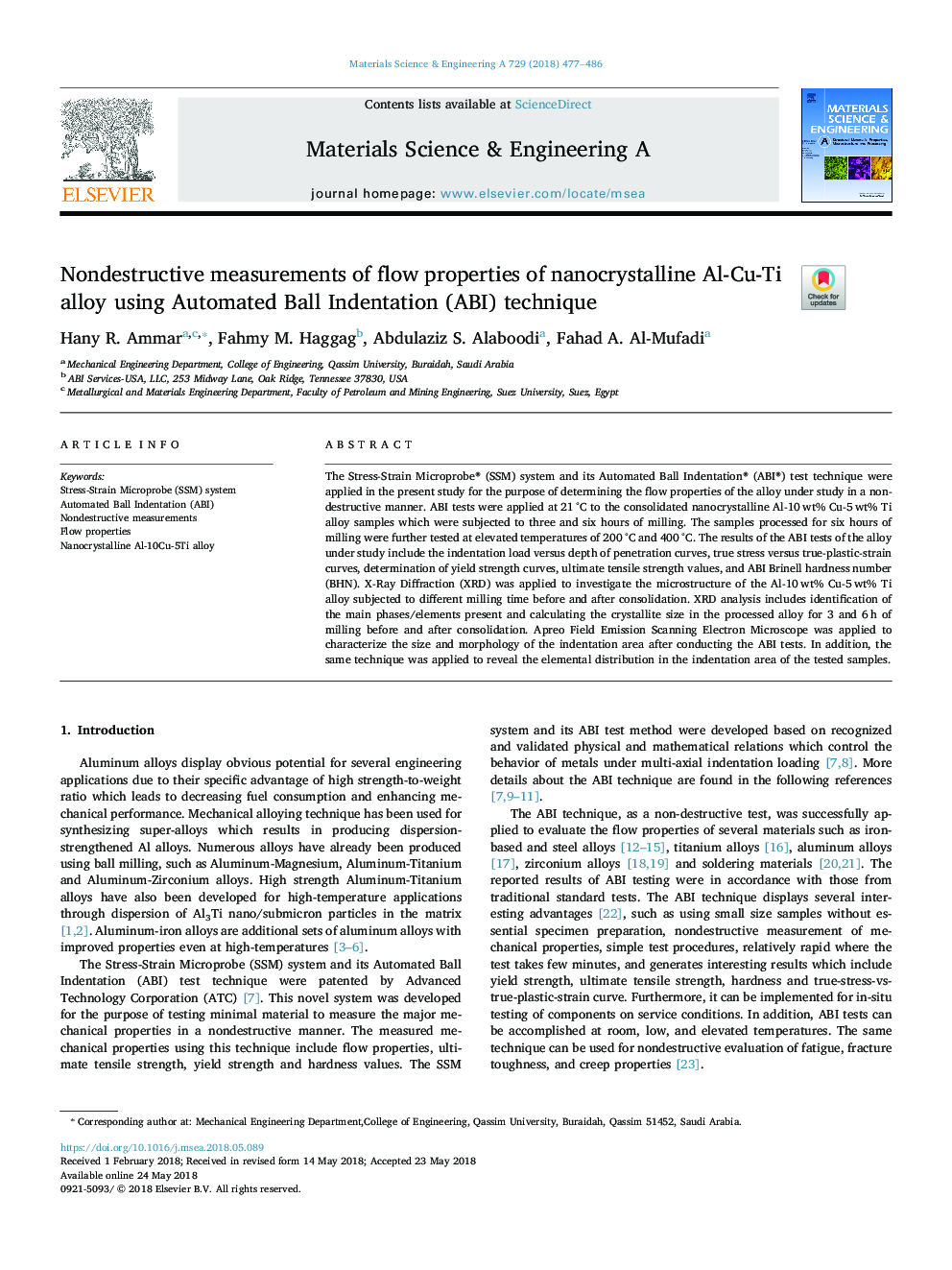| Article ID | Journal | Published Year | Pages | File Type |
|---|---|---|---|---|
| 7971974 | Materials Science and Engineering: A | 2018 | 10 Pages |
Abstract
The Stress-Strain Microprobe® (SSM) system and its Automated Ball Indentation® (ABI®) test technique were applied in the present study for the purpose of determining the flow properties of the alloy under study in a non-destructive manner. ABI tests were applied at 21â¯Â°C to the consolidated nanocrystalline Al-10â¯wt% Cu-5â¯wt% Ti alloy samples which were subjected to three and six hours of milling. The samples processed for six hours of milling were further tested at elevated temperatures of 200â¯Â°C and 400â¯Â°C. The results of the ABI tests of the alloy under study include the indentation load versus depth of penetration curves, true stress versus true-plastic-strain curves, determination of yield strength curves, ultimate tensile strength values, and ABI Brinell hardness number (BHN). X-Ray Diffraction (XRD) was applied to investigate the microstructure of the Al-10â¯wt% Cu-5â¯wt% Ti alloy subjected to different milling time before and after consolidation. XRD analysis includes identification of the main phases/elements present and calculating the crystallite size in the processed alloy for 3 and 6â¯h of milling before and after consolidation. Apreo Field Emission Scanning Electron Microscope was applied to characterize the size and morphology of the indentation area after conducting the ABI tests. In addition, the same technique was applied to reveal the elemental distribution in the indentation area of the tested samples.
Related Topics
Physical Sciences and Engineering
Materials Science
Materials Science (General)
Authors
Hany R. Ammar, Fahmy M. Haggag, Abdulaziz S. Alaboodi, Fahad A. Al-Mufadi,
